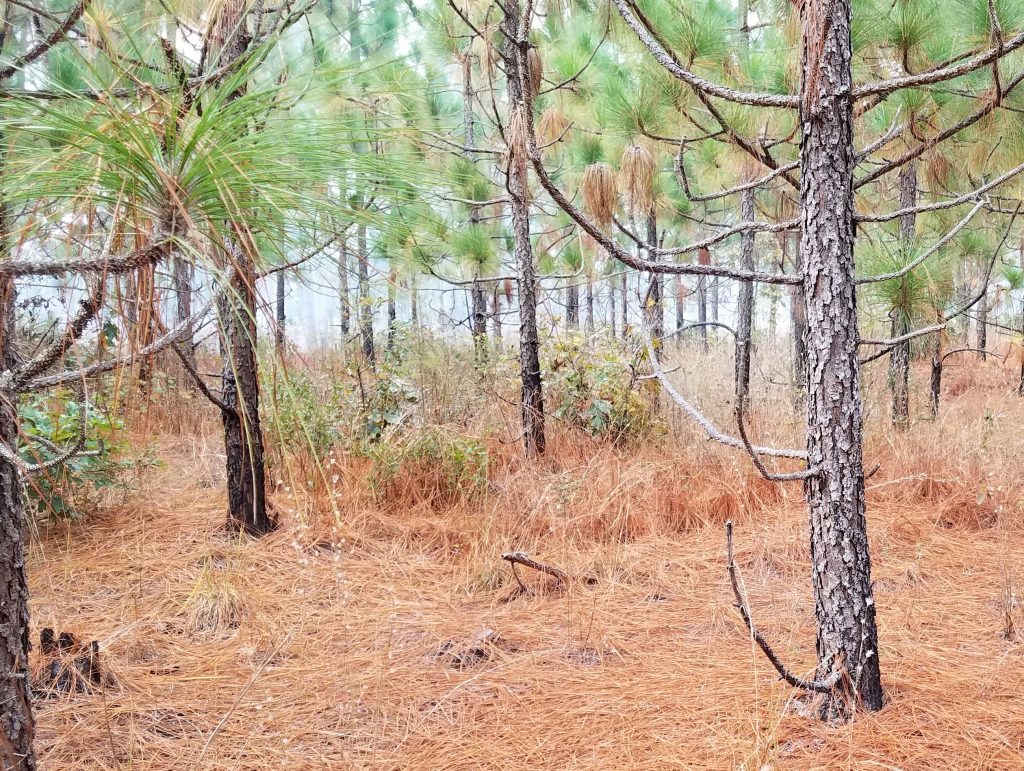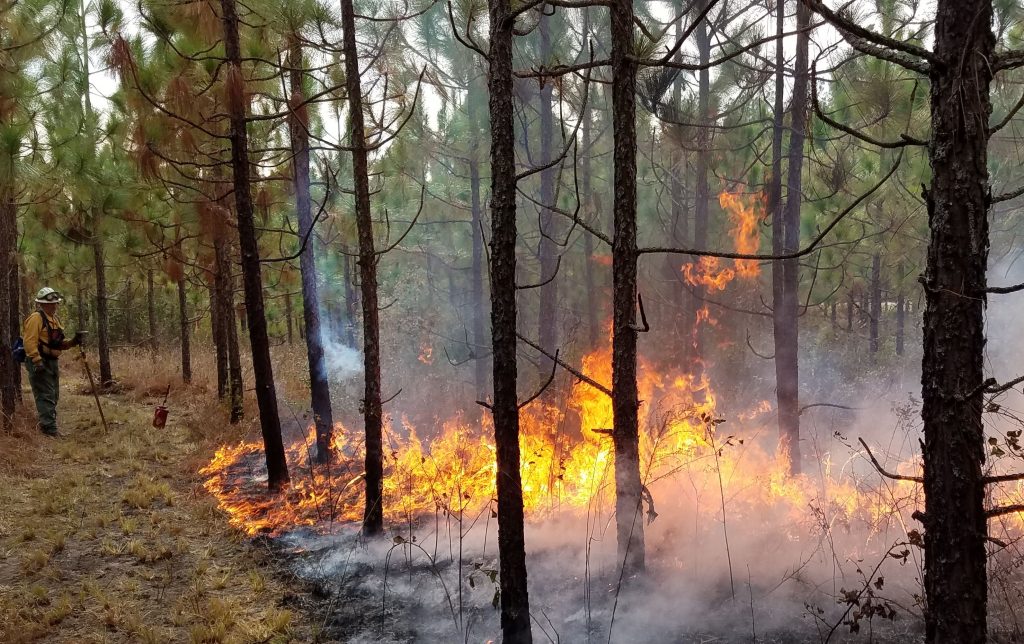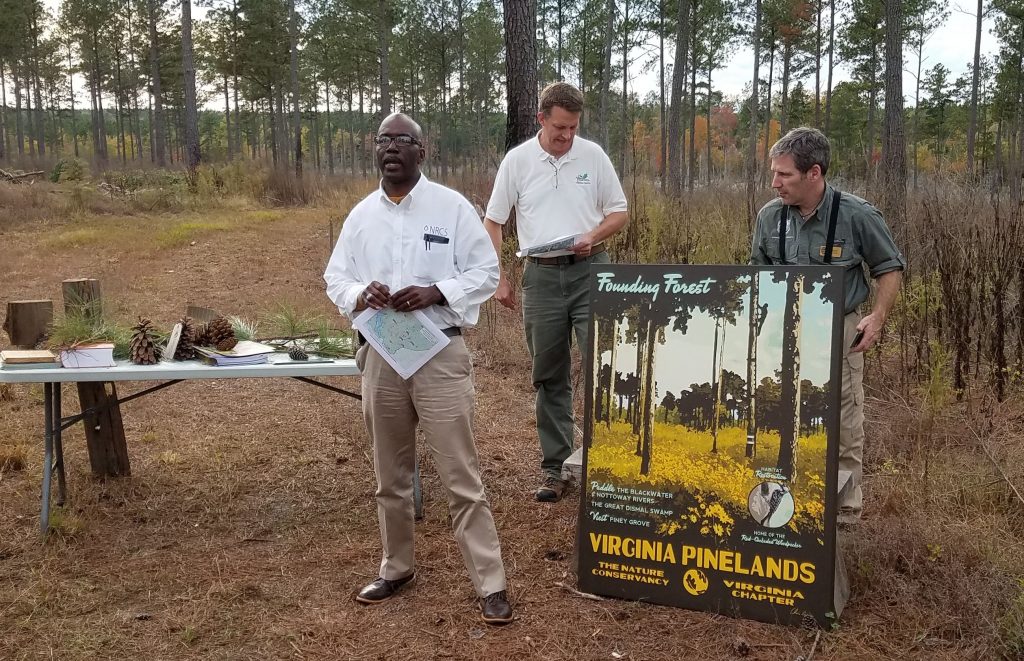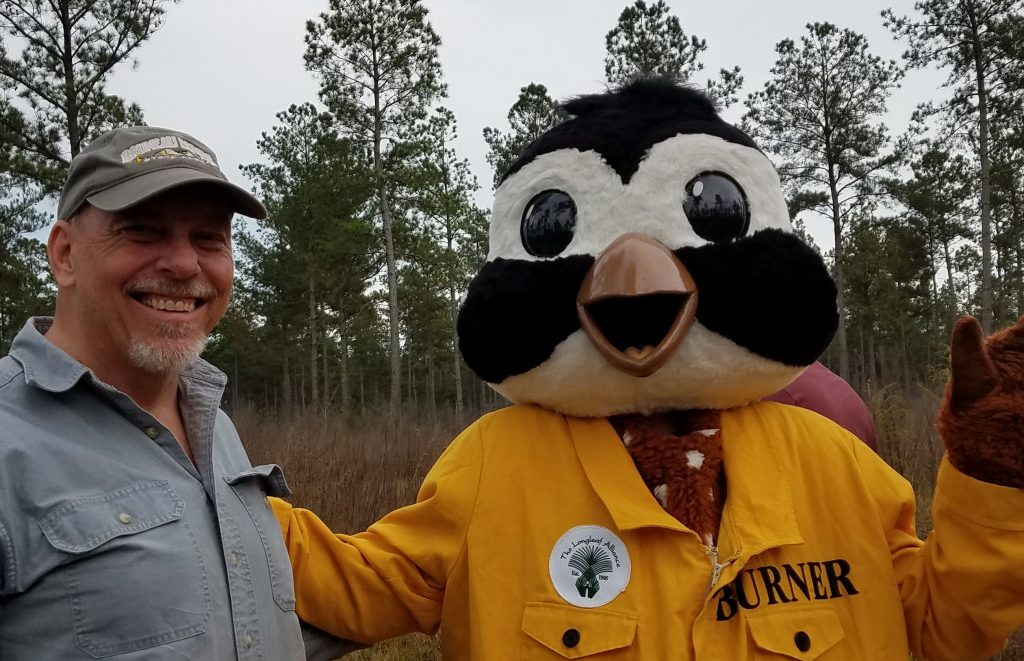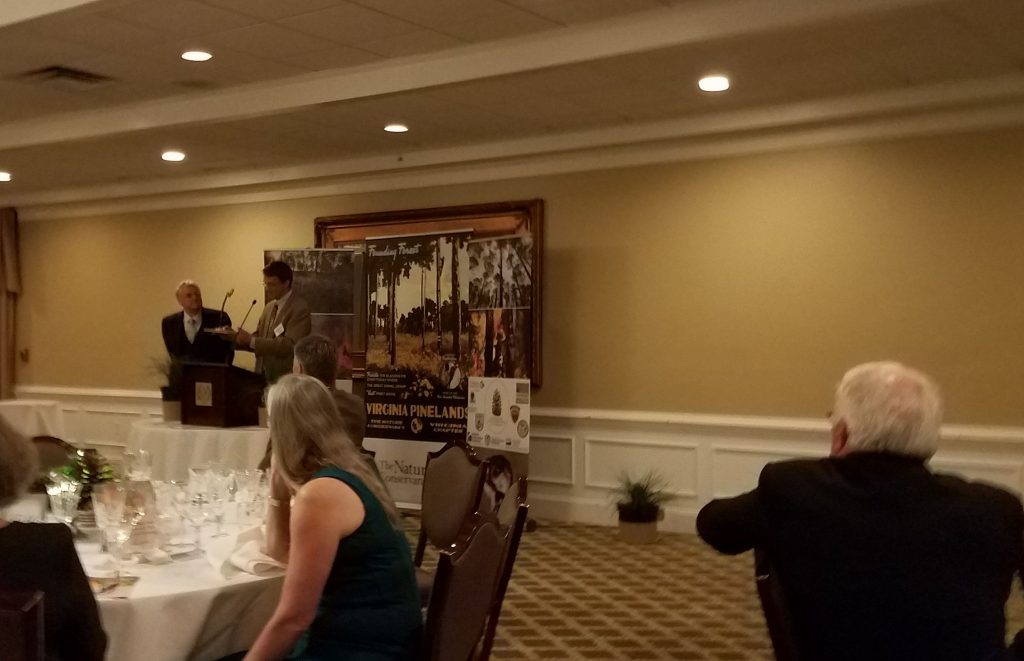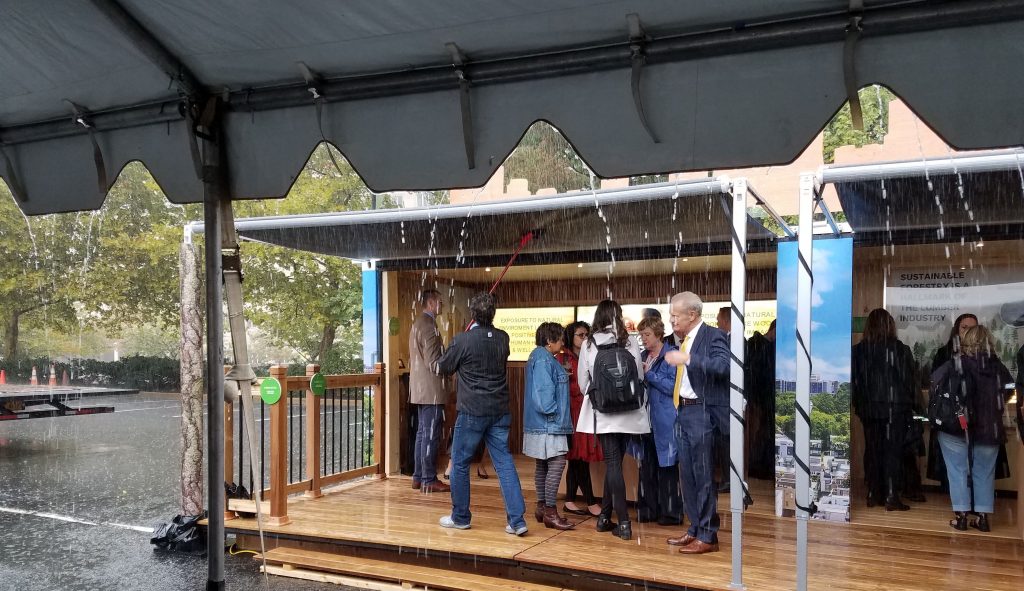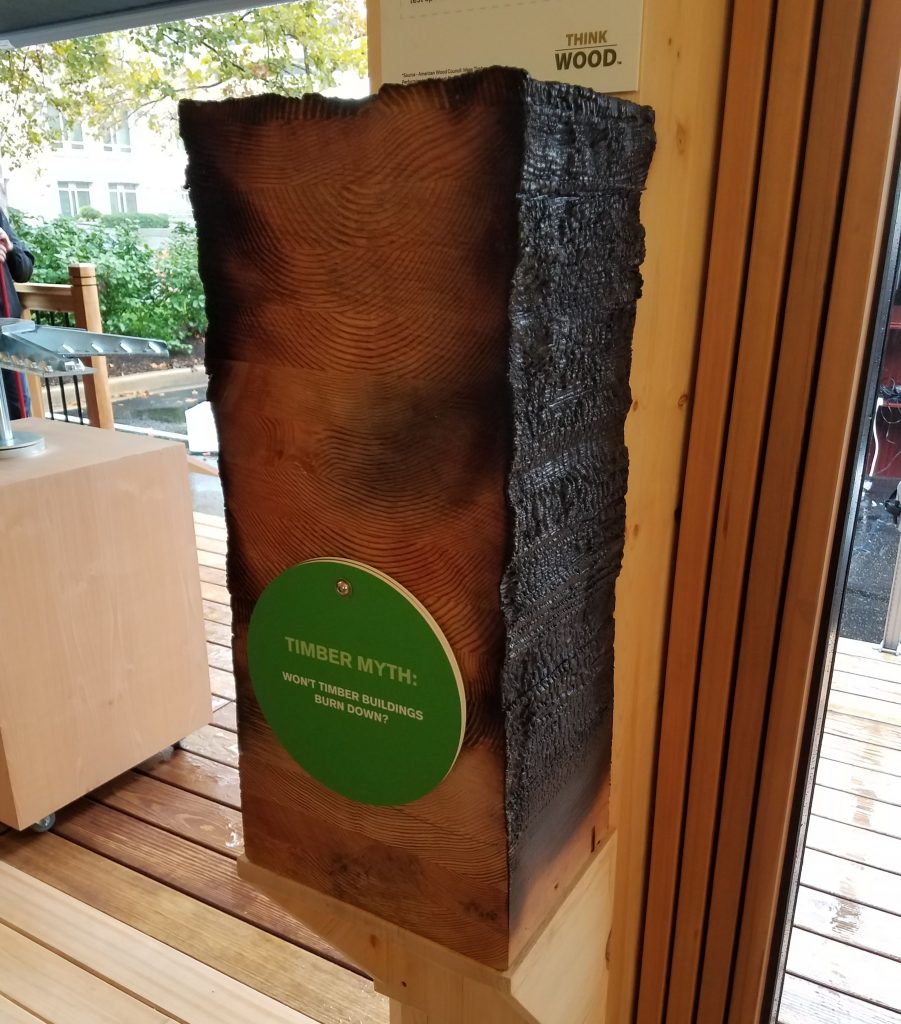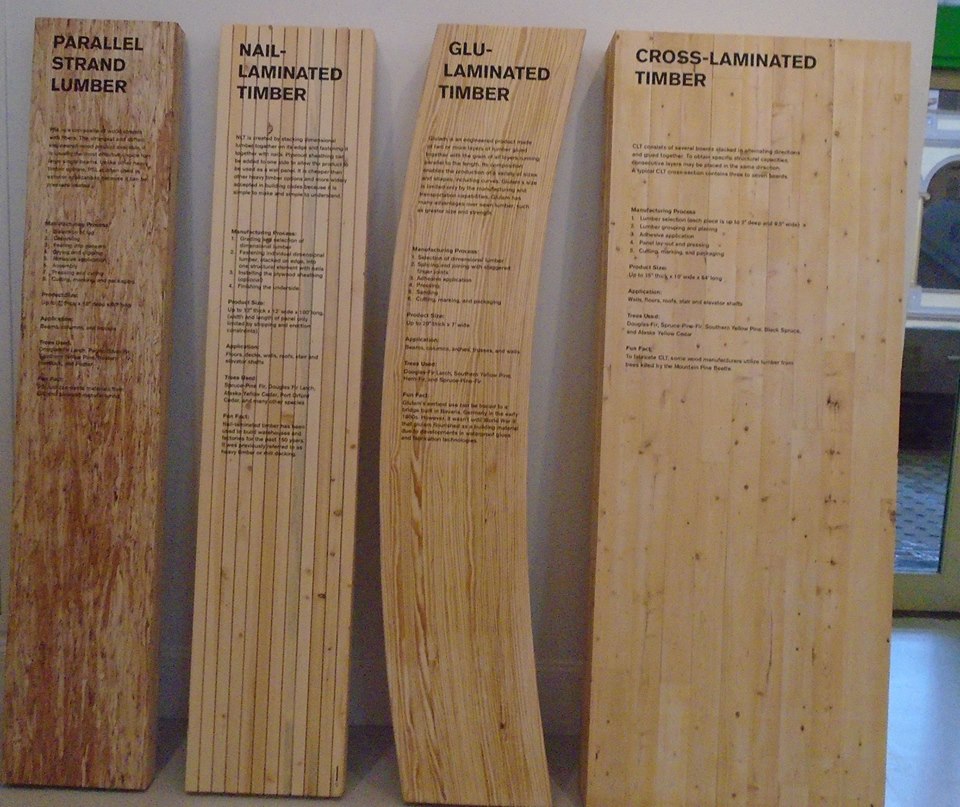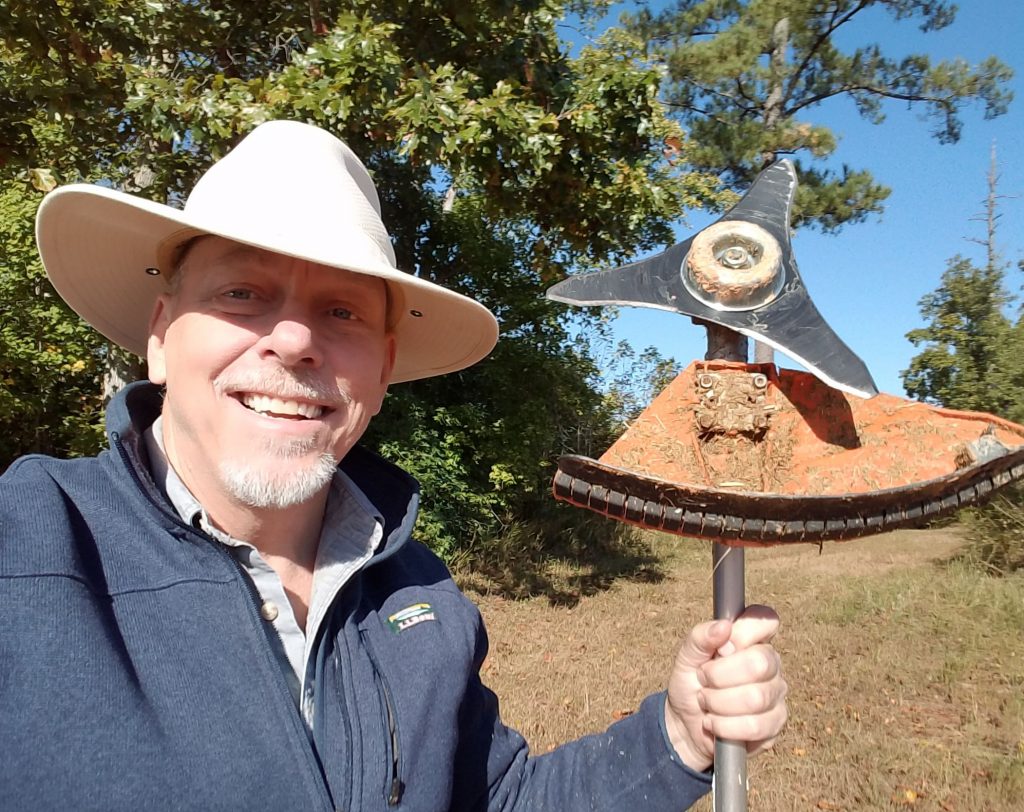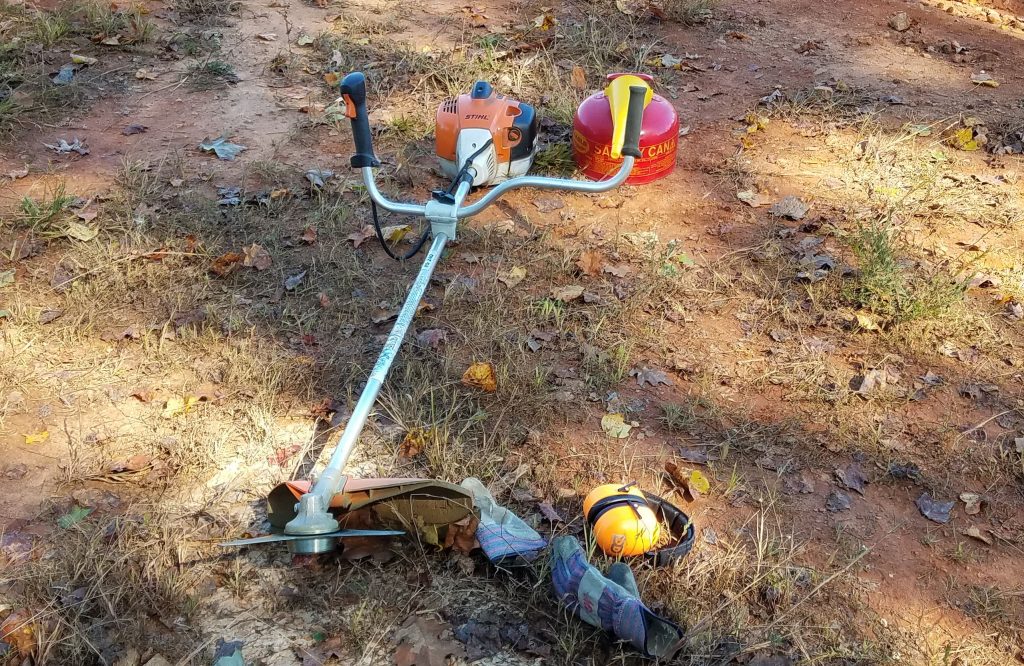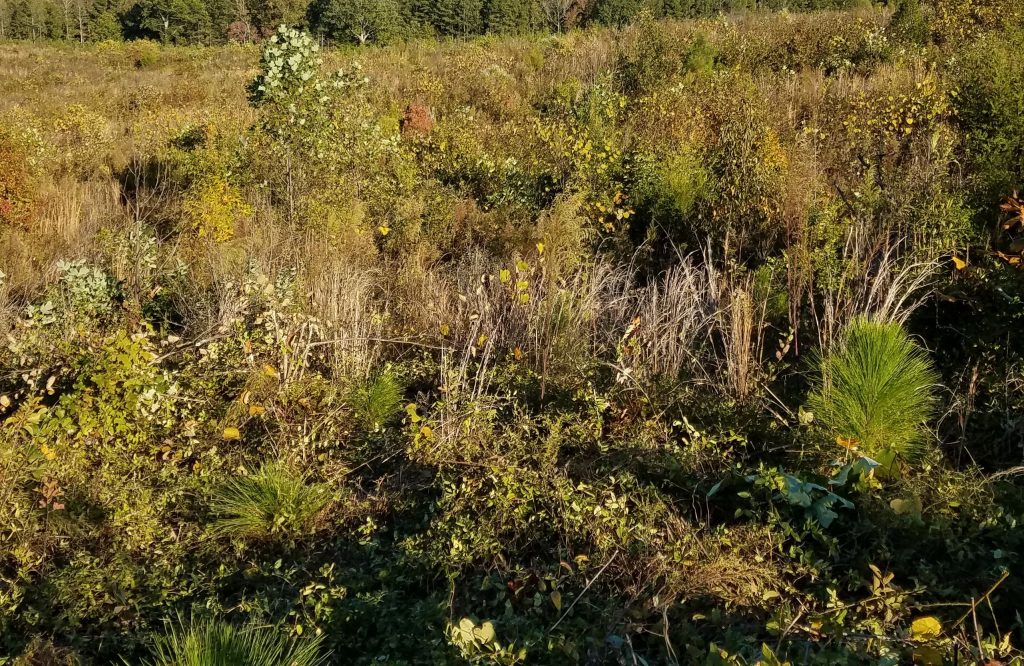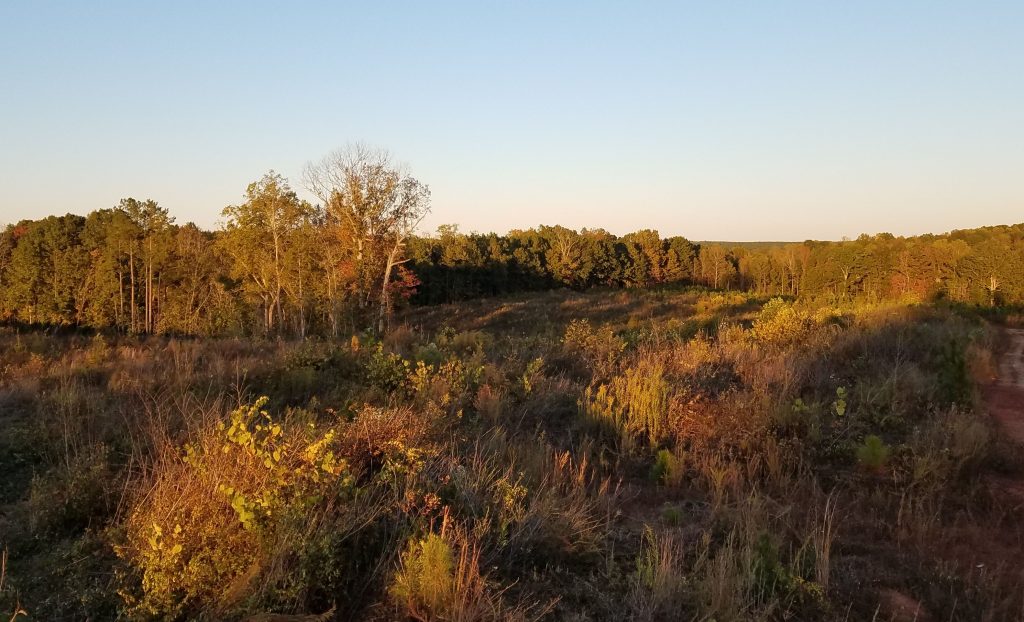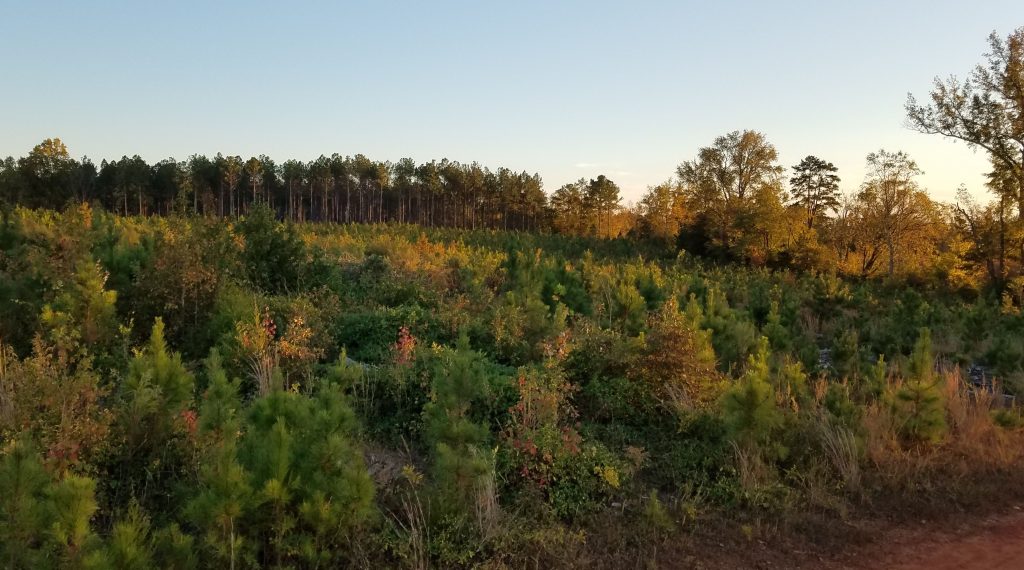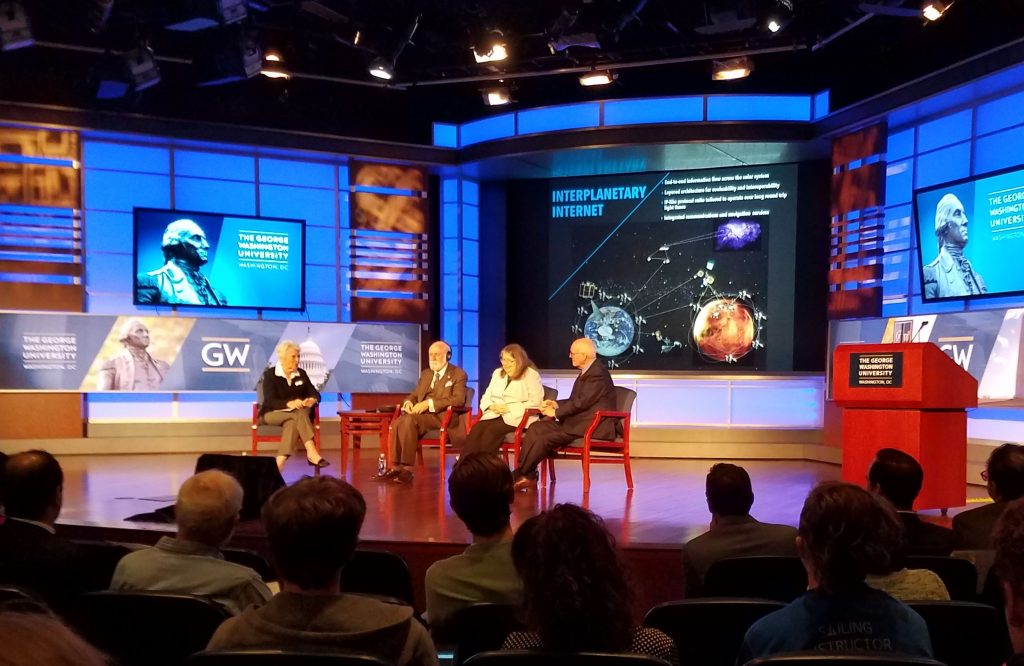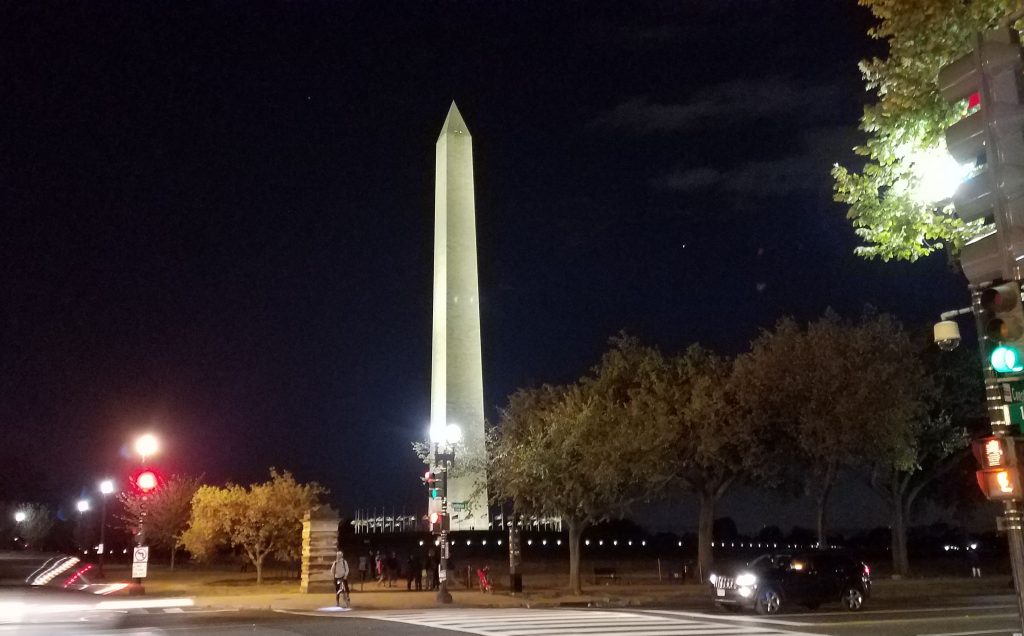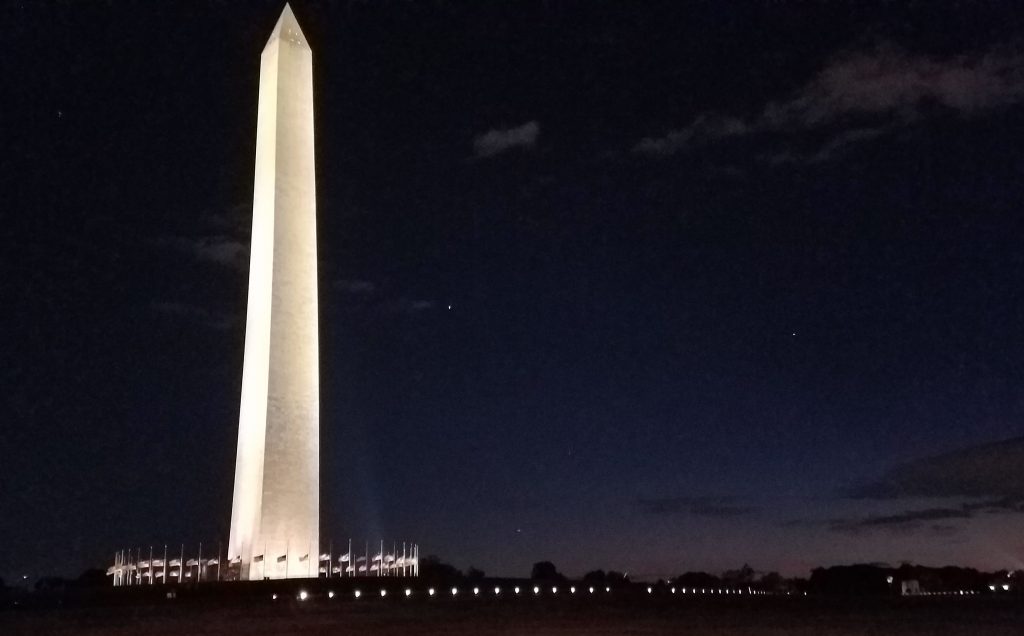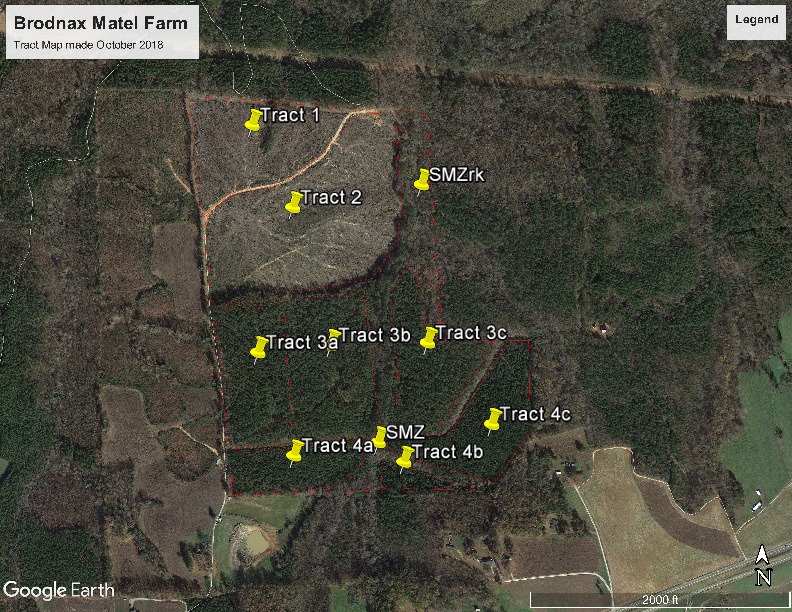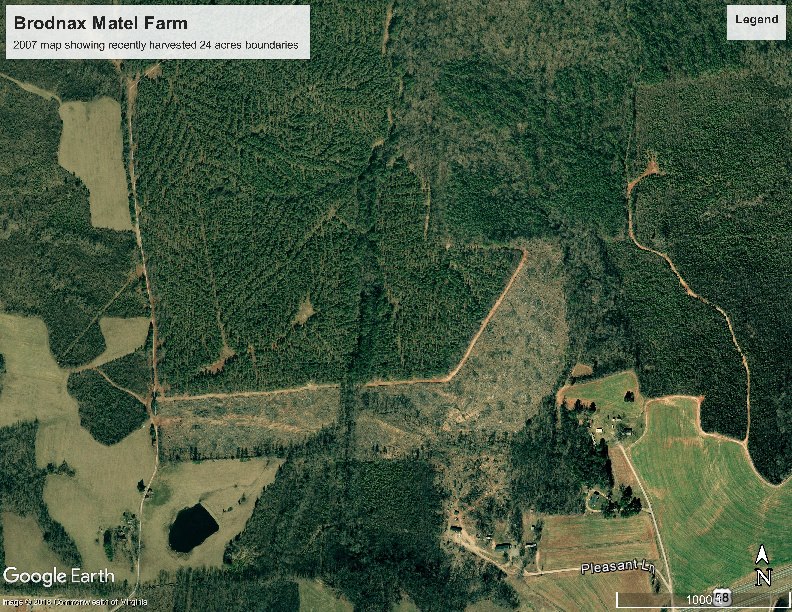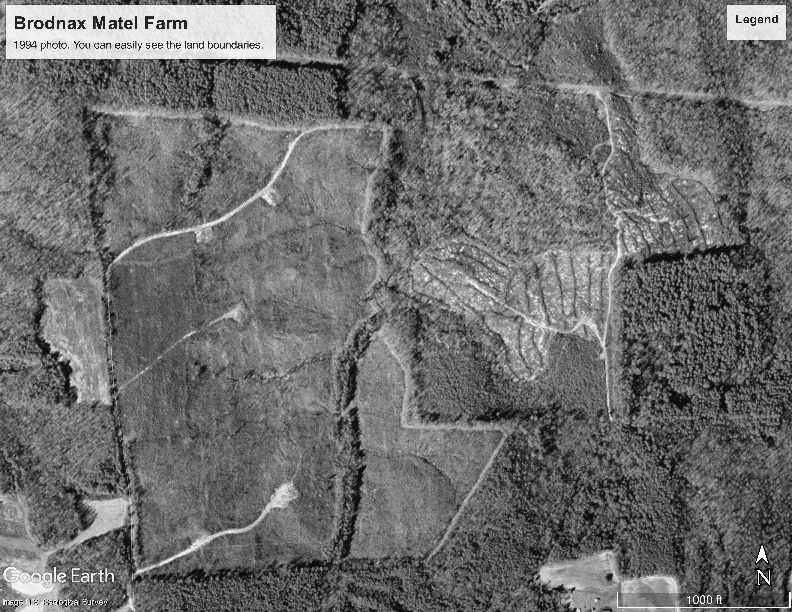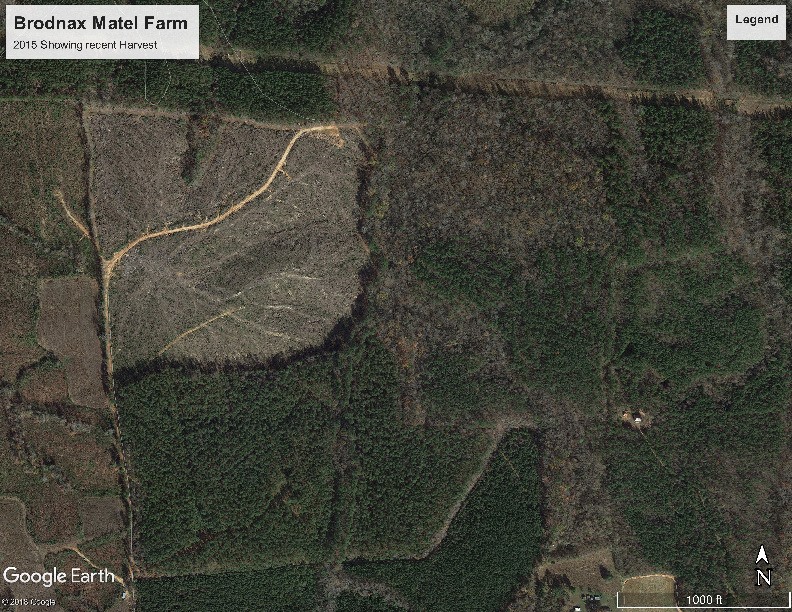The program was organized by Chris Sands, Johns Hopkins, and featured University of Calgary Professor Ian Brodie, former Chief of Staff to Canadian PM Stephen Harper talking about post-election politics in Ottawa. The event seemed mostly for Hopkins’ students, who made up almost all the crowd of about thirty and were so much engaged that the program stretched two hours. I met my old colleague Jim Dickmeyer, Acting Director, The Canada Institute. Jim came into the Foreign Service a few months before I did. We got to know each other when we worked in Brazil.
The focus of the program was Professor Brodie’s book “At the Centre of Government: The Prime Minister and the Limits of Political Power.” He brought a copy of the book, but unlike many such book events, no books were on sale. Brodie said that he wrote the book mostly for Canadians to understand their own government but was familiar with the U.S. system and would make comparisons to help us Americans understand.
Most Americans and most Canadians are aware of differences but rarely think about them, assuming presidents and prime ministers have different titles but similar prerogatives. They do not.
Canada does not have the same system of checks and balances that we have. In the USA the independent Congress checks the president. In Canada, the parliament checks the prime minister only by changing power. Canada expects that governments will change and that disciplines the PMs. Otherwise, they can do much more of what they want than a U.S. president. This gives more power to career government officials. Canada is not run as in the famous BBC series “Yes Minister,” he said, but there is some truth in that show for Canada as well as the UK.
There is some talk among political scientists that the provinces are the check on the PM. There are only ten Canadian provinces, which gives each premier relatively greater weight than the governor of one of the 50 states. There are some particulars among the provinces. Alberta has most of the energy and Quebec in unique in many ways, but the provinces rarely get together to check the PM.
Brodie said that most federal governments wisely leave most local issues to the provinces. The Trudeau government, in Brodie’s opinion, has interfered more and that is causing some tension.
In response to questions, Brodie got into some specific programs.
Canada has been trying to expand the pipeline from the oil and gas fields of Alberta to the Pacific, the Trans Mountain Pipeline. The federal government acquired the pipeline with the intent of modernizing and expanding it. This has become necessary because of a big drop in American demand, after the development of fracking made so much American oil and gas available. The oil producers are having trouble selling all their oil and cannot sell much natural gas at all. The pipeline would connect to international markets. Likely much of it would still go to the USA, but via the Pacific.
Brodie says that the federal government has run into all sorts of obstacles in getting the pipeline up and running. This, Brodie says, is a problem much more serious than the already serious problem of shipping hydrocarbons. It has become a test for federal effectiveness. If they cannot get this done, it will seriously detract from the government’s reputation for getting things done. This will affect investment not only in energy, but also in other potentially controversial activities such as mining. They are also missing opportunities to leverage pipeline construction with other issues, such as the Columbia River Treaty, also a big producer of energy.
Answering a follow up question, Brodie said that Alberta oil producers have learned to produce oil with much less a carbon footprint. They did this mostly to save money. Energy is a cost after all, but it has ecological benefits.
Speaking of political issues, Brodie said that Canada has some of the same issues as the USA with social media. Canada once had a controlled and calm media. Not anymore. Brodie worries that the battle of ideas had degraded into a battle of online mobilization. This is chaotic and beyond the control of the parties. When asked about political action committees (PACs), Brodie said that they have less power than those in the USA because they are prohibited from spending large sums during elections, elections are call, not scheduled, and the election periods are short. PACs tend to be used for intra-party discipline rather than to influence elections directly.
Questions and answers also included details about personalities I did not know about. Unfortunately, I do not have sufficient background to put them in context.
Canada’s New Government: The Limits of Power
by The Center for Canadian Studies at Johns Hopkins University SAIS
Event Information
University of Calgary Professor Ian Brodie, former Chief of Staff to Canadian PM Stephen Harper on post-election politics in Ottawa
About this Event
The Center for Canadian Studies is pleased to welcome distinguished University of Calgary Professor Ian Brodie to discuss the lessons and insights from his new book, At the Centre of Government: The Prime Minister and the Limits of Political Power (McGill Queen’s University Press, 2019). Dr. Brodie served as Chief of Staff to former Prime Minister Stephen Harper during the Conservative minority government from 2006 to 2008, and will discuss the outlook for the newly elected Canadian government. Senior Research Professor Christopher Sands, Director of the Center for Canadian Studies will serve as moderator.
The whole forest life cycle
My contribution to Virginia Forests Magazine
The whole forest life cycle
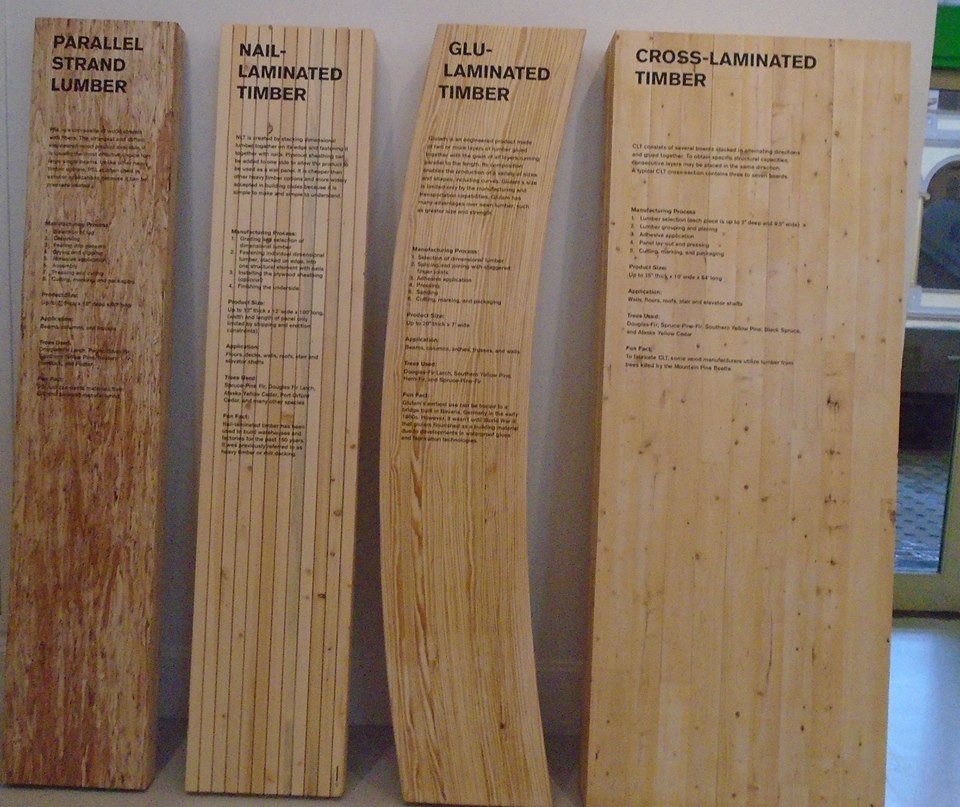
Most of our mid-rise and almost all our tall buildings are made mostly from concrete and steel. Production and transport of concrete and steel buildings is extremely energy intensive and emits massive amounts of CO2. We just cannot build in the same old wasteful way. Fortunately, there is a simple solution – wood the original green building material, now updated for the 21st Century.
Mass timber: new technology for wood
The key is the development mass timber, a category that includes heavy timber beams and various sorts of laminated timber. Of these, the most revolutionary is Cross laminated timber (CLT). As the name implies, boards set across each other creating a mass timber product combining strength in both tension and compression, with the power and spanning capacity of steel and fire resistance of concrete. This last factor is surprising. Everybody knows that wood burns and we have all seen pictures of buildings engulfed in flames, but mass timber chars. If you have tried to start a campfire using only big logs, you know the situation. The outside turns black, but the fire does not penetrate.
CLT means that wood can replace concrete or steel in the mid and high-rise buildings they now predominate. It is a revolutionary development.
Well managed forests are the key
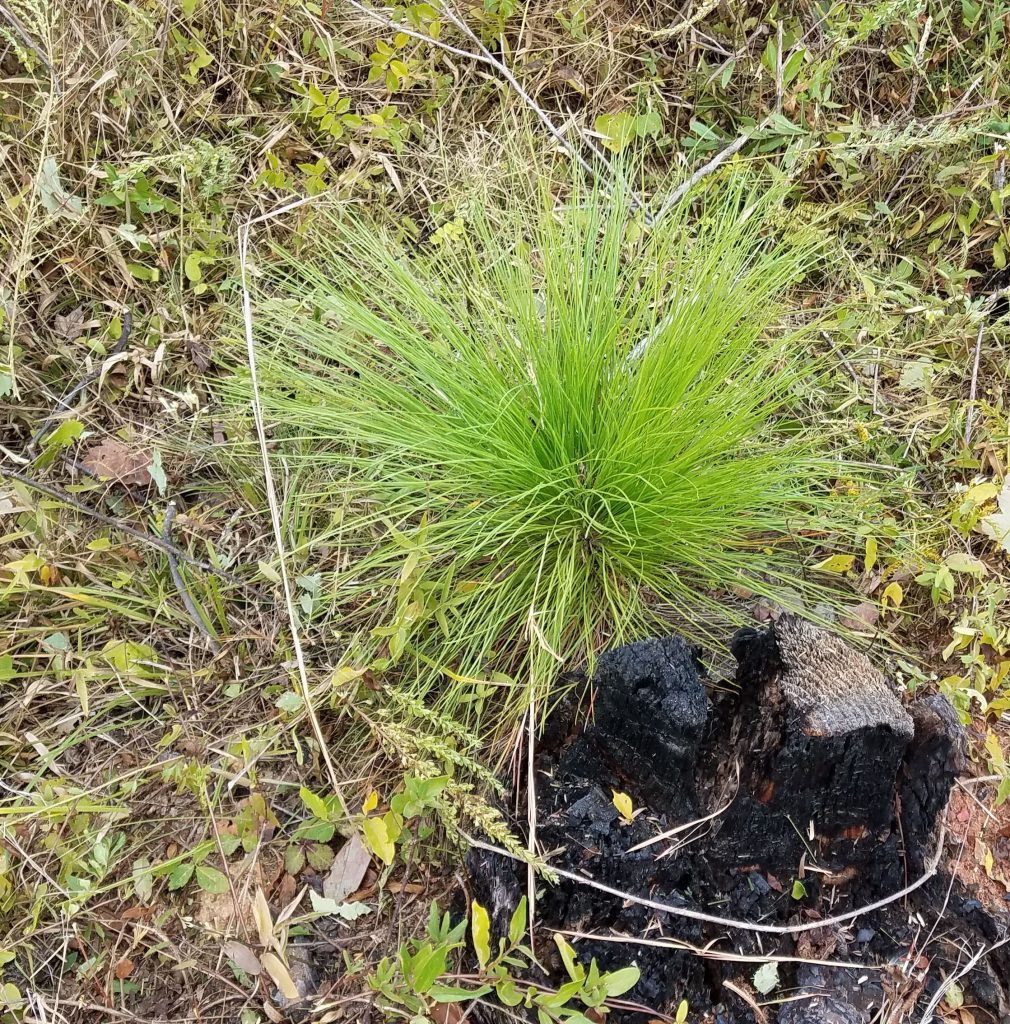
But I am not an engineer or an architect. I can tell you only what experts tell me about these innovations building with wood, and I believe them. Forests I know from personal experience and lifelong passion and it is my land ethic and understanding of a total forest life cycle that drives my commitment to building with wood.
The way I see it wood in the built environment is an extension of the life of our forests. Our trees suck up (sequester) carbon every year they are growing. When they are harvested, wood processed into CLT used in tall buildings can hold onto that carbon for years, decades even centuries. Carbon makes up about 50% of wood’s dry weight. Meanwhile, we are growing the next generations of trees, also absorbing carbon while creating wildlife habitat, protecting water resources and just being things of beauty.
The whole virtuous circle depends on our good forest stewardship. The wood in our high-rise “urban forests” must come from properly managed and probably certified forests. It would not do to deforest our land to build the urban forests. We must look forward to future generations. Fortunately, Virginia tree farmers are up to the challenge. It is what we do and have done since the American Tree Farm System was created, a proud legacy made newly important by timber innovation.
This is the contribution we can make, are making and will make in future.
Good background https://www.bbc.com/future/article/20190717-climate-change-wooden-architecture-concrete-global-warming
Biggest private longleaf forests in Virginia
Everything I can do, Bill Owens can do better, at least when we are talking about longleaf pine in Virginia. This is all to the good, since we all benefit from the good works of others. Bill has a lot more acreage in general, a lot more acreage in longleaf (his land comprises around 20% of ALL Virginia longleaf on private land) and yesterday I attended a program commemorating his committing more than 1500 acres to stewardship for the Nature Conservancy.
Fire in the forest can be good
We started with a field demonstration of fire in longleaf forests. People who know me are bored when I say it, but I need to repeat anyway. Longleaf is a fire dependent species. The first English colonists found vast and generally wide-open forests of longleaf. Judging from the remnants we see today, they were forests of remarkable beauty and diversity. They harvested the big trees. This was our founding forest, the forests that first built what became the United States of America. Trees are a renewable resource, but the colonists did a couple things that prevented regeneration of longleaf forests – they introduced free-range pigs that rooting up longleaf seedlings (the pigs especially liked the longleaf because of their bigger roots) and they excluded fire. They just didn’t understand.
Fire was a regular feature in pre-settlement Virginia pinelands. Some were set off by lighting, more often it was Native Americans who set fires. Virginia was not a wilderness. It was a landscape managed by humans, with fire as their most potent tool. Fire passed through Virginia pine forests every 3-5 years, more frequently in some other areas of the south. These were low intensity fires, surface fires that pruned the lower branches but did not reach into the crowns, as you see in my first picture. They burned brush and litter, but rarely killed mature trees. This was an ecologically beneficial fire (not like those we read about in California that result from poor land management, but that is a different story.)
Bringing fire back
Virginia Department of Forestry, US Fish and Wildlife, TNC, Longleaf Alliance, NRCS and lots of private landowners, me among them, are trying to reintroduce ecologically beneficial fire to the commonwealth. It a deeply cooperative endeavor.
The ecological benefits of fire are obvious to scientists who study fire and practitioners who use it to improve forest health and wildlife habitat, but setting the woods on fire is not an easy sell to a general public that grew up with Smokey Bear’s messages and images of fire destroying forests and homes. As I am writing this, I am listening to reports of dangerous fires in California. Fire is the enemy, according to most people. If nothing else, they dislike the smoke and disturbance. To this there are two responses.
— Re the problems of fire – fire is an unavoidable and natural part of nature. If we do not choose a good time to set off the fire, nature will give it to us in the worst times. And if we exclude small fires, we will get big ones. This is history and the present, as we hear about every year.
–Re disturbing nature – nature is always disturbed. It is how nature works, always becoming never arriving. We call that natural change. Embrace impermanence. It must be welcomed. We can benefit if we understand and flow with natural processes. We can multiply our choices working with nature or we can be dragged painfully along in ignorance & against our will. In either case, we are going.
You can tell which I advocate. Living within natural processes brings freedom and contentment. Fighting them brings frustration and ruin. A life spent trying to understand, or maybe perceive natural processes in meaningful. But I am drifting from my story.
Returning to the Owen story
Bill Owen’s generosity was commemorated with a reception at the Petersburg Country Club. Among the speakers were Reese Thompson from Longleaf Alliance. He is the one who “invented” Burner Bob, a giant bobwhite quail that promotes prescribed fire in the forests the way Smokey Bear told us to avoid wildfire. Bettina Ring, Virginia Secretary of Agriculture and Forestry and previous Virginia State Forester. She pointed out that agriculture is Virginia’s leading industry and forestry is number three, after tourism. Brian Van Eerden from TNC opened and closed the ceremony.
My first picture shows the fire in the forest. Next is what it looks like unburned for only a little more than a year. The stuff accumulates. Picture #3 is me and Burner Bob, followed by NRCS and TNC explaining longleaf ecology and programs available to landowners. Next is the ceremony at Petersburg Country Club. The penultimate picture shows a special longleaf beer and the final picture shows some of my bald cypress on the Freeman place. They are easy to see with their fall colors. I have trimmed around them so that they will not be killed by the fire we plan for this winter.
Mass Timber road show
The Think Wood mobile tour is a beautiful museum-quality display showing environmental & economic benefits of different softwood lumber and engineered wood products. I attended the launch at the National Building Museum.
New wood technologies
New technologies and innovative techniques are transforming the way we build with wood. The key to much of this improvement is mass timber. This category includes heavy timber beams and various sorts of laminated timber (held together with glue, nail and dowels). The most revolutionary is Cross laminated timber (CLT). As the name implies, boards set across each other creating a mass wood product with strength in tension and compression and giving it the strength and spanning capacity of steel and fire resistance of concrete.
U.S. Rep. Bruce Westerman from Arkansas & architect Susan Jones were among the speakers.
Bruce Westerman
Westerman gave the perfect talk about how and why we need to care for forests. I was mightily impressed that he did it w/o notes. I am not accustomed to such environmental competence in politicians, and I briefly considered moving to Arkansas just so I could vote for this guy. When I looked up his biography, I understood. He has a MA in forestry from Yale.
Besides the discussion about properly caring for forests, Westerman went on that building with wood was something that we can right now do to address climate change. Trees absorb carbon as they grow. When harvested trees go into buildings, the wood may hold that carbon for decades or even centuries. Wood buildings are essentially part of the forests life cycle.
Susan Jones
Susan Jones is probably America’s leading evangelist for cross laminated timber. In fact, it was her talk at the National Building Museum in 2016 the converted me to the cause of mass timber and the forest connection.
She was also instrumental to changing building codes to allow building taller with wood.
Nothing we can do that is more effective to address climate change
I am not an engineer or an architect, so I can tell you only what experts tell me about these wood innovations. Forests I know from personal experience and lifelong passion and it is my land ethic and understanding of a total forest life cycle and my land ethic that drives my commitment to building with wood.
Most of our mid-rise and almost all our tall buildings are made mostly from concrete and steel. Production and transport of concrete and steel buildings is extremely energy intensive and emits massive amounts of CO2. Fortunately, there is a simple solution – wood. Wood is the original green building material.
Besides caring for my own forests and helping others do the same, nothing I can personally do that will do more to address climate change than advocating for more wood used in building medium-rise and tall buildings. Healthy forests and cities built with wood is a virtuous cycle.
Beyond all that, wood is just nice. It makes people feel better to be around wood. Most people like to look at it, touch it and smell it. I know that scientists have figured out the connection. I just know it is true.
My first picture show the exhibit on the rainy day. I took the pictured sheltered in the tent with little salmon sandwiches and free beer. The next picture shows what happens when mass timber is exposed to fire. The outside chars, but it does not easily burn and it maintains its structural integrity. Scientists and fire departments around the world are testing this product and finding wonderful results. Next are pictures of Rep Westerman and Susan Jones. My last picture is one I took a couple years ago at the “Timber City” exhibit showing the types of mass timber.
Brush cutting
Chrissy jokes that I talk so much about my brush cutter that I like it better than I like her. Of course, that sure is not true. You can see all the pictures of Chrissy that I proudly post on Facebook. However … the cutter is looking good and I did take it down to the farms, bought it several drinks, gas not beer, as you see in the first two pictures.
I spent the day cutting paths and cutting around the longleaf that I could find on Brodnax. There are lots of them on the slopes facing north and east, likely because the dirt there did not dry out as much, but there are not many in some sections. Besides the drier conditions, I think that the bramble over topped some. As I wrote elsewhere, I learned a few things from this experience and will apply them on Freeman. On the other hand, I cannot go back in time, so I have to adapt from now. I plan to fill in with loblolly and oak. As I wrote, first two pictures are cutter related. Next is the 2016 loblolly at end of the day, followed by the scene of the longleaf field. I took both from the ten foot tower that the hunt club put there. Last is some of the places were there are lots of longleaf. If only it was like that more generally.
Origins of Internet
Vint Cerf, Steve Crocker, and Radia Perlman were pioneers of the Internet. Vint Cerf is recognized as one of the “fathers or the Internet.” I can’t say I really knew how eminent they were, but the subject “Origins of the Internet” seemed interesting and it was. It is almost the 50th birthday of the Internet. ARPANET made its first two connections on 29 October 1969. Cerf explained that it was just the start of a communication network. Nobody knew what it would become. They knew their limitations, however, and wisely played on that. They did not try to build a system but rather a process that others could build. Radia Perlman said that her strength was that she knew less about computers than the average person. Her contribution was to make things so simple that a person like her could use it. She said at times she had to fight engineers, who like the complications. She said that there were complaints that some people enjoy the set up. Perlman said that people need not understand all or most what they are doing. You can have competence w/o comprehension.
I am almost finished with a book called “The Code” that talks about this history of Internet, and I have read others. I did not learn many new facts from this lecture, but I got a more. Seeing the ease and comfort that these people had discussing the subject was worth the trip into town. The loved their work and they helped create great things. My first picture is from the talk – “An evening of discussion and discovery with the creators and architects of the Internet. Vint Cerf, Steve Crocker, and Radia Perlman, are set to speak at GWU about their lives and experiences that helped them to create one of the most revolutionary inventions in human history. These distinguished speakers will discuss how failure, collaboration, and inclusivity foster great science, and how science can continue to build on the great work they have begun.” The other two pictures are Washington Monument at night. I rode my bike down to the talk, but I take the Metro back, both because it is dark and because it is all up hill on the way back. It was a very easy ride in because of a northwest wind that gusted up to 25 mph. Great tail wind was almost like using one of those electric bikes.
2019 update on Brodnax plan
Keeping up with our plans for our forests.
Tract 1
Acres: 20
Forest Type: Longleaf pine
Species Present: Loblolly & longleaf pine, ailanthus, American sycamore, sweet gum, yellow poplar, eastern red cedar, hackberry, shortleaf pine, Virginia pine, mockernut hickory, white oak, chestnut oak, black oak, green ash, mulberry, sassafras, black cherry, persimmon, holly, black locust, blackgum, and red maple.
Age: Longleaf pine planted 2016. Volunteers of other species same time.
Size: Planted 2016. Currently small
Quality: good. IMO a little thin with longleaf.
Trees/acre: Thinly stocked for our management objectives, but enough, since we want to allow growth of grass and forbs.
Growth Rate: excellent.
Recommendations:
The vegetative nature of this parcel provides benefits to wildlife due to the diversity of ground covers and understories. We plan to:
- Do understory burns every 2-4 years. This will over time make the stand more exclusively longleaf
- Create field borders on this parcel
- Maintain and enhance diverse and native ground covers
2019 observations and actions
Tract became overgrown with brambles and hardwood brush, a lot of redbud very aggressive. I made paths with my cutter and looked for longleaf. I found that the site is insufficiently stocked with longleaf. My guess is that it results from too low survival rate after planting and competition, even though we did release spray and burning in fall of 2017. The task of trimming around the extant longleaf is labor intensive, but I had the tool and time, so I did it. It is, however, clear that even if all the longleaf survive, there will never be enough of them to dominate the site.
My new plan is to diversify the tracts with oak and super loblolly. The oaks will be a mix between natural regeneration and an experiment with 150 acorns I gathered under a magnificent bur oak near the Capitol. I have cleared brush and planted the acorns. See if they grow. I am also letting the nearby oaks seed in. I have ordered a thousand “super” loblolly and I will put them in the rows where longleaf woulda/shoulda been. I figure that the longleaf head start will make them about the same size at first thinning.
Tract 2
Acres: 30
Forest Type: Loblolly pine planted 2016
Species Present: Longleaf & loblolly pine, sumac, some oak, ailanthus, American sycamore, sweet gum, yellow poplar, eastern red cedar, hackberry, shortleaf pine, Virginia pine, mockernut hickory, white oak, chestnut oak, black oak, green ash, mulberry, sassafras, black cherry, persimmon, holly, black locust, black gum, and red maple.
Age: Planted in 2016
Size: Tallest around 8 feet high in 2018
Quality: Excellent
Trees/acre: Adequately stocked. Trees are widely spaced on purpose to allow wildlife and understory growth
Growth Rate: Excellent
Recommendations:
Parcel will be burned o/a 2021, a cool season fire to clear hardwood and thin volunteer loblolly. Density will be maintained low enough to allow growth of forbs and grass for wildlife habitat.
2019 observations and actions
The trees are doing very well on most of the tract. In some places, however, they are overgrown with hardwood competition, especially gum, poplar and redbud. The redbud is a surprising competitor. I just never thought about it, but it has formed tight thickets that are shading out everything else. I have been doing “touchup” with my cutter, knocking down the thickets. I figure this will give the loblolly the advantage they need to get above the redbud, which can then form the pleasant understory.
Tract 3 a, b & c
Acres: 45
Forest Type: Loblolly & longleaf pine.
Species Present: Loblolly and longleaf pine, ailanthus, American sycamore, sweet gum, yellow poplar, eastern red cedar, hackberry, shortleaf pine, Virginia pine, mockernut hickory, white oak, chestnut oak, black oak, green ash, mulberry, sassafras, black cherry, persimmon, holly, black locust, blackgum, and red maple.
Age: Loblolly planted 1992. Longleaf pine planted 2018/19
Size: chip and saw to sawtimber, loblolly; longleaf are seedlings
Quality: excellent
Trees/acre: Adequately stocked, although purposely thinner than standard management due to our desire to maintain wildlife habitat.
Growth Rate: Excellent
Recommendations:
Tract a, b & c will be burned in alternatively to create and maintain wildlife habitat and maintain a fire regime more like pre-settlement patterns in Virginia. This tract also includes pollinator habitat planted in 2018 along the edges. We hope and expect this to seed into the sunny forest.
2019 observations & actions
The growing season fire of May 2018 on tract 3a killed about two dozen trees. I left them as snags for wildlife and planted some longleaf underneath. I have also been in with my cutter, knocking down hardwood except for oak. The fire did a good job of cleaning up the understory.
The dormant season fire on February 2019 on 3c was nearly perfect. I have some oak regeneration in the understory and will be on the look out to protect them, but I have done nothing besides observe.
Mixed results with pollinator habitat. We planted around five acres along the edges in 2018. Some came back in 2019, but not as profusely as I would like. I will plant in some patches in spring 2020
Tract 4 a, b & c
Acres: 24
Forest Type: Loblolly pine.
Species Present: Loblolly and longleaf pine, ailanthus, American sycamore, sweet gum, yellow poplar, eastern red cedar, hackberry, shortleaf pine, Virginia pine, mockernut hickory, white oak, chestnut oak, black oak, green ash, mulberry, sassafras, black cherry, persimmon, holly, black locust, blackgum, and red maple.
Age: Loblolly planted 2007
Size: mostly pulp; some chip and saw
Quality: excellent
Trees/acre: Adequately stocked, maybe even a bit too tight. Shade does not allow much to grow on the ground under the trees.
Growth Rate: Excellent
Recommendations:
Tract a, & c will be burned in alternatively to thin in lieu of pre-commercial thinning. Track 4b will be left unburned as a control plot
2019 observations and actions
I walked around the tract but saw nothing useful to do. There are some vines growing into the trees and if I have extra time (unlikely) I can do in and knock some of them down, but the site is well stocked, and the canopy has closed. Wait for first thinning.
PARCEL SMZ
Acres: 18
Forest Type: Mixed hardwoods and pine.
Species Present: Loblolly pine, ailanthus, American beech, American sycamore, sweet gum, yellow poplar, eastern red cedar, hackberry, shortleaf pine, Virginia pine, mockernut hickory, white oak, chestnut oak, black oak, green ash, mulberry, sassafras, black cherry, persimmon, holly, black locust, blackgum, and red maple.
Age: 40 to 80+ years
Size: Various sizes including significant saw timber. (10 to 18 inches in diameter)
Quality: Good to excellent
Trees/acre: Adequately stocked
Growth Rate: Good to excellent
Recommendations:
This parcel is in place to protect water quality and to provide wildlife corridors. We will periodically examine the SMZs for invasive species and treat as appropriate. Beyond that, this area will be generally left to natural processes, with interventions only in the case of some sort of disaster, such as fire or particularly violent storms.
2019 observations and actions
I walked through the stands several times. The forests look healthy. Our February 2019 dormant season prescribed fire backed down through the adjacent SMZ, cleaning up some of the brush and litter and resulting in a little “thinning from below.” We plan to back fire down the other side of the SMZ in winter of 2020. Periodic burns should have beneficial effects over time.
Prepared by: _John Matel____________________________
Timeline
Year Tract Activity
2018
—3a Growing season burn – Done
–3a Understory plant longleaf – Done
2019
–3c dormant season burn – Done
2020
–3b & 4a Winter burn
2021 or 2022 depending on conditions
–1 & 2 Winter burn, maybe whole property
2022
–SMZ Remove invasive species
2023
–3b & c Clear cut harvest
–3a Harvest leaving 8 seed trees per acre
–4a, b & c First thinning to 80 BA
–3 & 4 Spray
2024
–3b & c Plant with Longleaf pine 400/acre
–3a Seed tree regeneration
2025
–1 Winter burn
2028
–1 & 3b & c Winter burn
2030
–4a, b & c Thinning to 50 BA
–3a Harvest seed trees
–1, 2, 3b & c Winter burn
This schedule may need to be adjusted depending on financial needs, timber markets, timing of actual harvest, and availability of contractors.
What TV programs did you watch as a kid
What television programs did you watch when you were growing up? My Story Worth for this week.
The ubiquity of television
We were lucky to have two televisions when I was growing up, and one of them lodged in my room. On the downside, both were black and white and neither got good reception. If you have seen video of the moon landing you know what it looked like on our TV most of the time. My father did not watch TV much but when he did watch “Mannix” or “The Untouchables,” it was my task to stand near the TV and move the antenna as appropriate. It never really worked. I also functioned as remote control.
We got the big three networks, plus a local channel and PBS. I was always glad if a favorite program was on NBC-4, because that channel got the best reception.
Westerns
The TV was on almost all the time when I was home. Let me be clear, I turned my TV on. It was my own doing. I just like to have something. Still do, although now it can be computer screen. Usually it was just on and I was not paying much attention. I liked westerns, most of which I saw in reruns. If you’ve seen one, you’ve seen them all and that is what I liked about them. The only way I can differentiate them is when I recall the theme songs. I remember “Bonanza,” “Rawhide,” “The Lone Ranger,” “Bat Masterson” & “Wyatt Earp.” My parents told me that I used to sing the theme song from “Wyatt Earp.” The chorus repeated, “Wyatt Earp, Wyatt Earp, brave, contagious & old.” I learned later that Wyatt was brave, courageous & bold.
The “Rifleman” body count
The basis of many of these shows was absurd. Consider “The Rifleman,” staring the fierce Chuck Connors. The story is that he is an ordinary rancher who lives near a small town on the prairie. For such a small place, it attracts more than its share of bad guys who need killin’. By the end of most shows, the Rifleman has reluctantly dispatched these bad guys to the promised land – bad guys, plural. Besides the mystery as to why bad guys would come to that small town in general, is the specific mystery about why any of them would make trouble. The murderous alacrity of the rifleman surely would discourage them. Somebody on Internet counted and found that the Rifleman shot 114 men, or an average of 2 1/2 per show.
Star Trek
Better than westerns, however, I liked science fiction, but there were only three that I recall – “Twilight Zone,” “Outer Limits” & “Star Trek.” I got to know these mostly in reruns and I still watch “Twilight Zone” marathons. I was one of the few original “Star Trek” fans. I watched its prime time three years, their five-year mission to explore strange new worlds cut short by bad ratings. “Star Trek” found its audience – college kids – only when they started to do reruns in the early evenings.
Another Internet truth, so it must be true, debunks the myth that the guys on Star Trek with the red shirts always get killed. Of course, when Kirk, Spock, McCoy and the guy with the red shirt beam down to the planet, you know who ain’t coming back.
Risky red shirts
But there are evidently more red shirts than any other type. Some nerd has done the math. More red shirts died on-screen than any other kind of member of the crew (10 gold-shirted, which are command personnel; eight blue-shirted, who are scientists; and 25 red-shirted). However, those calculations do not take into account that there are apparently way more red shirts on the Enterprise to start with than any other crew type.
Out of 239 red shirts, 25 died, about 10%. Out of 55 gold shirts, 10 died, 18%. So you are more likely to die as a gold-shirted command officer. Only 6% of the blue shirted scientists didn’t make it back. So the gold shirted command types are the most at risk. Generally, working on the Enterprise is very dangerous, sure not as bad as making trouble in the Rifleman town, but worse than being in most modern war zones.
TV babes
I must add a special section on teenage TV crushes. Some TV shows I watched mostly because of the pretty women stars. My favorite was Dianne Rigg on “The Avengers.” Others included Samantha on “Bewitched,” Jeanie on “I Dream of Jennie” and Maryanne on “Gilligan’s Island.” These were objectively horrible shows, but I bet lots of boys 13-15 watched them anyway.
Here’s Johnny
I joined the swim team in HS and that changed my television habits, among other things. The workouts started right after school and we finished about 5:30. We used goggles, but the chlorine in the pool still irritated our eyes and swim workouts are physically tough. I used to lift weights too, and that was hard to do right after a swim workout. My adaptation was to come home, eat a fast supper and then take a nap for a couple hours to rest my body and let my eyes clear. I would wake up around 9 and do a little homework and then lift weights during Johnny Carson. I thought Johnny Carson was so cool. I especially liked guests like Rodney Dangerfield & Don Rickles.
The wonders of cable TV and the Internet mean that I can watch all those old programs just about on demand. My memory of them is better than they really were.
More From Less
The free market system works & all successful societies today are free market democracies. Free market democracies vary from the social democracies like Denmark and the less government involved democracies like the USA or Australia, but they are of the same species.
The bright line is between social democracy and socialism. It is unfortunate that they share the same root word, since it causes confusion. The difference is that in socialism government owns or controls major means of production.
Andrew McAfee is not a stickler for what people call themselves, but whether or not the systems feature what he calls the four horsemen of optimism – tech progress and capitalism combined with public awareness and responsive governments. The first two created and continue to advance the prosperity that they started around 300 years ago. The other two introduce values of the societies.
A way to look at tech & capitalism is that they are tools and methods. Just as you cannot build a house, a bridge or car w/o tools, you cannot build a prosperous society w/o tech and capitalism. They are necessary to a good society but not sufficient. To extend the tools analogy, we can use tools to build a home or a prison. Those are choices.
The tools of tech and capitalism have done so much good that we sometimes do not notice. The book goes into history of how we cured diseases, created widespread prosperity, greatly reduced deep poverty and enabled accelerated scientific advances. I fast-forwarded through this section, but I am aware that most people are unaware of the history so it must be included.
All of the above is common knowledge, if not always widely appreciate. The thrust of the book, implied by the title “More from less” is that market democracies have turned the corner in using less resources despite growing populations and more consumption.
Capitalists are always seeking to cut costs. This means they have the incentive to use less. Tech progress working in this incentive system gives the choices. A simple example is aluminum cans. An aluminum can today used only a fraction of the aluminum a can used decades ago. Even a greater example is what you & I are doing here. I wrote this and you are reading this with no need to print or distribute. We can all have a library of thousands of books with no need to for the resources to make and hold them.
Capitalism and tech progress do an outstanding job making new products. They do not do well with “externalities”. This is where the public awareness & responsive governments come into play. They are the democracy part of market democracy.
The obvious example of this is pollution. We need regulation and public awareness to identify and remedy externalities. There is a constant dynamic in this, but experience here is clear. Market democracies enjoy much healthier environments than others. If you look at the Index of Economic Freedom, you see that economic freedom is clearly related to better environments.
The big challenge today is climate change. Many people think that meeting the challenge will require radical changes. History is not on the side of this interpretation. Puritanical austerity will not do the job. The tools of tech and capitalism can be directed to address this problem too.
Let me give an example of how this worked earlier in my lifetime. I graduated HS into the “energy & resource crisis”. This was called an existential threat and experts told us that our way of life would need to change radically. They made dire prediction of famine, pestilence, deprivation. We were supposed to run out of oil, metals, wood … Scared the crap out of me when I was young. We adapted and overcame so well that it has become easy to dismiss those concerns as baseless. While there was exaggeration and hysteria, most concerns were real and overcome.
The system works. We can and often do change course, but there are no viable alternatives.

amazon.com More from Less: How We Learned to Create More Without Using More
The Invention of Nature
Humboldt is the most “famous” guy you have never heard of. His influence is big. Alexander von Humboldt influenced Thoreau, Darwin & environmentalists generally in the most recent centuries. More thing are named for Humboldt than probably for anybody else. There is the Humboldt current off the west coast of South America. Mountains, a species of willow, counties in the USA, even one of the seas on the moon. My neighborhood park in Milwaukee was named for Humboldt, although I didn’t know anything beyond the name when I was a kid So … who was Alexander von Humboldt? He was a great naturalist in the era just before specialization dominated the sciences. His monumental work was called “Cosmos” where he describe everything, the last person ever to credibly do undertake such an endeavor.
Humboldt explored lots of the world, but mostly he is known for his exploration of South America, where he mapped the land and documented thousands of new species.
The book I just finished was called “The Invention of Nature: Alexander von Humboldt’s New World.” It might seem strange that nature needed inventing. Isn’t it just there? Not really. Sure, something is there, but it is just chaotic, so much beyond human understanding that it is as meaningless to humans as the compete works of Shakespeare might be to your cat.
Humboldt’s contribution was to see nature as a whole, greater than the sum of the parts, as a complex of relationships. Our whole science of ecology comes from this understanding.
I bought this book because of this promise. I am interested in concept like this – the invention of nature, the creation of wilderness, do historians report or create history? This book was a bit of disappointment in this respect. It was a good biography of this extraordinary individual, but not so much a discussion of the invention of nature or to what extent we can call nature an invention.

amazon.com The Invention of Nature: Alexander von Humboldt’s New World Alexander von Humboldt (1769-1859) was an intrepid explorer and the most… 2

